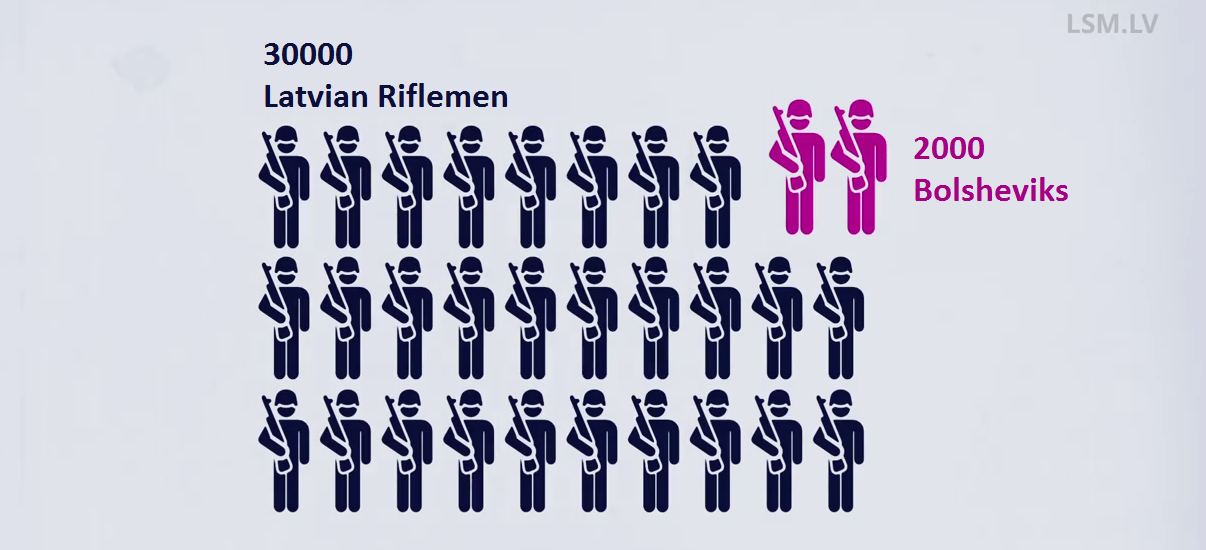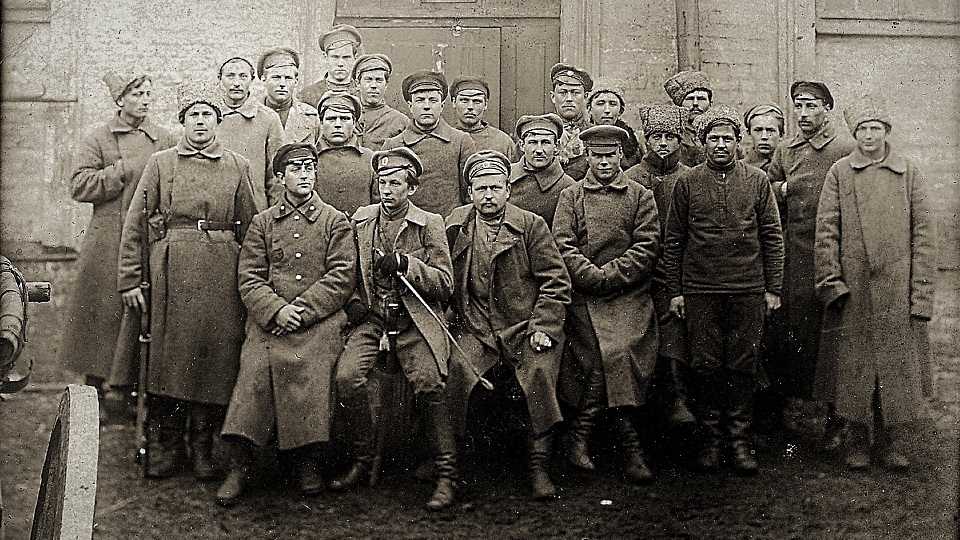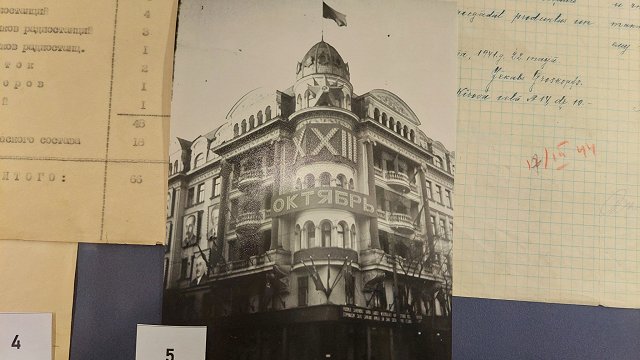The Latvian Riflemen
When German invasion was imminent in 1915, Latvians petitioned the Tsar to form Latvian national battalions. Nicholas II had his doubts - which would later prove to be well-founded - about the true allegiances of the Latvians, many of whom had participated in the 1905 revolution.
Nevertheless, volunteers soon formed the first units, and conscription started in 1916.
They later fought legendary battles against the German forces, sometimes in temperatures of below -35C.
As revolution swept through Russia, most of the Latvian Riflemen turned coats and fought at the Bolsheviks' side - though they did so mostly for national, not ideological motives - and helped securing the military dominance of the Soviets. Read more about the Latvian Riflemen here.
The most important facts:
1. A company of 328 to guard Lenin
A special company of Latvian Riflemen was formed to guard the Smolny Institute where the Soviet government (Lenin's Cabinet) was located. They selected forty riflemen from each regiment who were put into the company. Most of them were Bolsheviks; at that time, a total 2,000 of Latvian Riflemen were Bolsheviks, making up about 6% of the total number.

The company arrived in Petrograd on December 9. A total 328 riflemen were addressed by Lenin in Smolny and the company was located on the third floor of the Smolny Institute.

Photo: Latvian War Museum
2. Tukums locals in Petrograd
The 6. Tukums Latvian Riflemen Regiment arrived in Petrograd together with the pro-Bolshevik riflemen company. After the Bolshevik revolution most of their officers refused to cooperate with the Military Revolutionary Committee and were arrested. Commander Krišjānis Berķis was among them. The 6th regiment consisted of about 2,500 people. As their officers had been put behind bars, they were not ready for combat, but they were still usable to ensure order.
It arrived on December 8 and was used to guard strategic objects, including the Tauride Palace where the Russian Constituent Assembly was to convene.

Latvian Riflemen from the Tukums Regiment in December 1917
3. The rest did not want to go
Most Latvian Riflemen did not want to go to Russia. The units had been set up to defend Latvia, and the majority of them only became riflemen to avoid being sent off to a faraway place.
Meanwhile the press reported that the riflemen would be used to dissolve the Russian Constituent Assembly, which was also not acceptable to many riflemen.
Two weeks after the Tukums regiment left, the town of Cēsis held the fifth congress of the Latvian Riflemen. The 7th Bauska Latvian Riflemen Regiment had already adopted a resolution that Latvian Riflemen should remain in the Baltics and could not be sent to Russia. Other regiments, too, did not express any desire to join the Tukums regiment in Petrograd.
Why was it important, and what did the riflemen think about?
Latvian Riflemen were increasingly anxious but also had a little hope in late 1917. They hoped that a Latvian Riflemen Corps would be set up, as per a promise of the new head of the Russian Army. It would see two Latvian divisions set up, along with dedicated cavalry, artillery and technical units set up--which the riflemen had had great need of in the preceding battles. The plan would have seen all the Latvian soldiers in the Russian Army united under the leadership of Jukums Vācietis.
It was also hoped that the Bolsheviks would come to power. They promised peace without contributions or annexations, which would mean that they'd return quickly home to Kurzeme and Riga.
However most riflemen did not like that their regiments were used in politics. Neither did they like the idea of being sent to Petrograd, Moscow or other far-off regions of Russia.
Within the next few months a few other riflemen regiments were 'commandeered' to Russia, but the majority refused to leave Latvia. Latvian Bolsheviks complained that the riflemen were uninterested in politics and that they preferred gambling and partying instead.

Red Latvian Riflemen in Valka. November 1917. Photo: Latvian War Museum
But they did not have it easy in Latvia as well. Food and fuel was scarce; a transportation crisis had erupted. Riflemen refused to be sent to positions that were practically unoccupied.
Meanwhile parts of the Russian Army had taken to looting and pillaging behind the front line, terrorizing the local farmers. The Riflemen regiments were used to keep public order. Some of them were lured to join the Red Guard units that were formed in Vidzeme and Latgale. However most of the riflemen slowly left their ranks, which melted like the spring snows.
In 1917 there were 30,000 Latvian Riflemen, but the number had shrunk to 15,000 in February 1918.



































